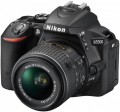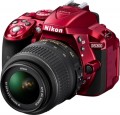DxOMark rating
The result shown by the camera in the DxOMark ranking.
DxOMark is one of the most popular and respected resources for expert camera testing. According to the test results, the camera receives a certain number of points; The more points, the higher the final score.
Light sensitivity (ISO)
The sensitivity range of a digital camera matrix. In digital photography, light sensitivity is expressed in the same ISO units as in film photography; however, unlike film, the light sensitivity of the sensor in a digital camera can be changed, which gives you more options for adjusting shooting parameters. High maximum light sensitivity is important if you have to use a lens with a low aperture (see Aperture), as well as when shooting dimly lit scenes and fast-moving objects; in the latter case, high ISO allows you to use low shutter speeds, which minimizes image blur. However, note that with an increase in the value of the applied ISO, the level of noise in the resulting images also increases.
Frames per series (RAW)
The highest number of shots the camera can capture “in one shot” when shooting in RAW format continuously (see “Recording in RAW Format”).
The technical features of modern digital cameras are such that during continuous shooting, photos have to be recorded in a special buffer, and only then, after the end of the series, they can be transferred to a memory card. This buffer has a limited size, so the number of frames in one series is also limited. At the same time, we note that this indicator is usually indicated for shooting at the highest possible resolution (see "Maximum image size"); at lower resolutions, the volume of each image is reduced, and the number of frames in the series may be more than stated in the specifications.
RAW images take up more space and require more processing power than "finished" JPEGs. Therefore, the number of frames in a series of this format is usually lower than that of JPEG. However, there are exceptions — usually these are cameras that have two separate buffers (for RAW and JPEG).
Frames per series (JPEG RAW)
The highest number of frames a camera can capture “in one go” in continuous shooting mode, where the same frame is saved in both JPEG and RAW format at the same time (see “Recording in RAW Format”).
The technical features of modern digital cameras are such that during continuous shooting, photos have to be recorded in a special buffer, and only then, after the end of the series, they can be copied to a memory card. This buffer has a limited size, so the number of frames in one series is also limited. At the same time, we note that this indicator is usually indicated for shooting at the highest possible resolution (see "Maximum image size"); at lower resolutions, the volume of each image is reduced, and the number of frames in the series may turn out to be more than stated in the specifications.
Shooting JPEG and RAW at the same time requires a lot of resources, and the materials themselves take up a lot of space. Therefore, the possibility of such shooting itself is available mainly in premium cameras, and the number of frames in a JPEG RAW series is usually less (at best, the same) than in any of these formats separately.
Connection ports
— USB C. A universal USB interface that uses a Type C connector. USB ports themselves (all types) are used mainly for connecting the camera to a computer for copying footage, managing settings, updating firmware, etc. Specifically The Type C connector is comparable in size to earlier miniUSB and microUSB, but has a reversible design that allows the plug to be inserted in either direction. In addition, USB C often operates according to the USB 3.1 standard, which allows for connection speeds of up to 10 Gbps - a useful feature when copying large amounts of content.
-
HDMI. A comprehensive digital interface that allows you to transmit video (including high resolution) and audio (up to multi-channel) over a single cable. The presence of such a port makes it possible to use the camera as a player: it can be directly connected to a TV, monitor, projector, etc. and view your footage on the big screen. In this case, broadcast capabilities can include not only video playback, but also demonstration of captured photos in slide show mode. HDMI inputs are present in most modern video equipment, and connection is usually not a problem.
Nowadays, there are several versions of the HDMI interface on the market:
- v 1.4. The oldest version currently relevant, released in 2009. However, it supports 3D video, is capable of working with resolutions up to 4096x2160 at a speed of 24 fps, and in Full HD resolution the frame rate can reach 120...fps. In addition to the original v.1.4, there are also improved modifications - v.1.4a and v.1.4b; they are similar in basic capabilities, in both cases the improvements affected mainly work with 3D content.
- v2.0. Significant HDMI update introduced in 2013. In this version, the maximum frame rate in 4K has increased to 60 fps, and support for ultra-wide 21:9 format can also be mentioned. In update v.2.0a, HDR support was added to the interface capabilities; in v.2.0b this function was improved and expanded.
- v 2.1. Despite the similarity in name to v.2.0, this version, released in 2017, was a very large-scale update. In particular, it added support for 8K and even 10 K at speeds up to 120 fps, and also further expanded the capabilities for working with HDR. This version was released with its own cable - HDMI Ultra High Speed; all features of v.2.1 are available only when using cables of this standard, although basic functions can be used with simpler cords.
— Headphone output. Audio output allows you to connect headphones to the camera. As a rule, it is represented by a classic 3.5 mm mini-jack. The presence of such a connector provides the ability to monitor sound during video recording in real time. This is especially important when filming interviews, vlogs and other similar projects.
— Microphone input. Specialized input for connecting an external microphone to the camera. External microphones are significantly superior to built-in microphones in sound quality. Firstly, they are not so sensitive to the camera’s “own” sounds - from buttons, control wheels, focus motors, etc. (and if the microphone uses a long wire and is not attached to the body, these sounds will not be heard at all). Secondly, external microphones themselves have more advanced characteristics. On the other hand, their use is justified mainly for professional video recording; therefore, the presence of a microphone input, as a rule, corresponds to advanced video recording capabilities
Touch focus
The presence of the touch focus function in the design of the camera.
Such focus is necessarily combined with a touch screen (see below). It gives the photographer the opportunity to independently choose a point for focus in the frame being shot: for this, it is enough to touch this point on the image displayed on the screen.
Touch focus is extremely simple and intuitive, and therefore very convenient, especially for beginners and non-professional users.
Front / back adjustment
The presence in the design of the camera of the function of adjusting the front / back focus.
"Front / back focus" (or simply "back focus") is the phenomenon when the autofocus system malfunctions and "misses" the desired object — despite the fact that this object was clearly visible in the viewfinder or on the screen. This phenomenon occurs due to a mismatch between the sighting system and the survey system; it can ruin a picture, especially when working with a shallow depth of field. Front / back focus is primarily affected by cameras with interchangeable lenses (see "Camera type"), because lenses (even "native", not to mention third-party products) can initially be poorly configured.
Adjusting the front / back allows you to correct the parameters of such optics using the camera itself and do without replacing the lens.
Touch screen
A touch-sensitive screen that allows the photographer to control camera functions. It is believed that such management is the most obvious; in addition, with its help, you can implement some additional features that are not available for other types of control — for example, touch focus (see above). And for models with Android OS (see below), the touch screen is a mandatory piece of equipment. On the other hand, such screens are more expensive than conventional ones, which can accordingly affect the price of the camera.
Communications
-
GPS module. The camera has a built-in GPS satellite navigation module. In digital cameras, the GPS module is used primarily for setting the so-called. geo-tagging to photos: information about specific geographical coordinates of the shooting location is recorded in the service information about each image. However, the matter is not limited to this, and models with this function can have many additional features - from classic navigation to special programs like a database of points of interest with hints based on the current location.
-
WiFi. A wireless standard originally developed for computer networking, but more recently allowing for direct connection between devices. The ways in which Wi-Fi is used in cameras can vary. Thus, the most popular option is to connect to a smartphone, tablet or other similar device for remote control (see below) and / or transfer footage to an external device. Some cameras have built-in software that allows you to directly connect to the Internet through wireless access points and upload photos and videos to popular network services. And in models running Android (see above), specific features depend only on the installed software and may include full access to social networks through client programs (see below) and even web surfing through a browser.
— Bluetooth. A wireless interface used to communicate with various electronic devices. In cameras, Blu
...etooth is most often used to connect to a computer or laptop and transfer footage; In addition, it allows you to use the direct printing function on printers equipped with Bluetooth. The range of Bluetooth communication is up to 10 m, and the devices do not necessarily have to be in direct line of sight to each other.
- NFC chip. NFC (Near-Field Communication) is a wireless communication technology designed to connect various portable devices with each other at a distance of up to several centimeters. In cameras it plays an auxiliary role, designed to facilitate connection with other devices (smartphones, tablets, etc.) using a longer-range standard (Wi-Fi or Bluetooth). Instead of delving into the settings - looking for devices, connecting them manually - just bring the NFC camera to a gadget equipped with the same chip and confirm the connection request.
— Control from a smartphone. The ability to remotely control the camera using a smartphone, tablet or other similar gadget. The connection between the camera and the control device is usually carried out via Wi-Fi (see above), while a special application is used for control, and the gadget’s screen plays the role of a viewfinder. The specific capabilities of such control can be different - releasing the shutter on command, selecting exposure parameters and other shooting settings, focusing by touch, etc. Often, it is also possible to “drain” the footage onto the control device and, through it, to the Internet. Note that for cameras used with mobile phones (see “Camera Type”), this function is not indicated: such a camera is usually mounted directly on the device, and there is no talk of remote control.


